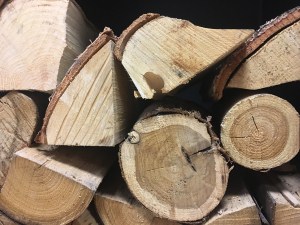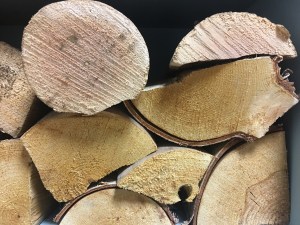 Within the next month or so, people will start to use their stoves once again, as the summer turns to autumn, and the days become cooler. Selecting the right fuel for your stove is essential. Burning the right fuel will mean you are getting the most from your stove and helping ensure it will have a long, useful life.
Within the next month or so, people will start to use their stoves once again, as the summer turns to autumn, and the days become cooler. Selecting the right fuel for your stove is essential. Burning the right fuel will mean you are getting the most from your stove and helping ensure it will have a long, useful life.
For wood burning stoves you should always use logs, with a moisture content below 25% – you can learn more about moisture content of wood in this article.
To help lower your carbon footprint, try and source local wood. The transportation cost of such in terms of the environmental impact, will be a great deal lower.
Key Points – Buying Wood:
We have mentioned in previous articles the things you should look for when buying wood. However, as a quick recap:
.
- Look for wood with a moisture content below 25%. Dry wood (seasoned wood) burns much more effectively. Wet wood is much less efficient, and can increase the risks of creosote and tar, which can increase the risk of chimney fires, and carbon monoxide poisoning.
. - Ensure your wood is not contaminated with things like paint or preservatives. Wood that has been treated should never be used on a stove, as this can produce harmful gases and cause congestion in a flue.
. - When buying wood the seller should advise if it is soft or hard wood you are buying, and if the wood meets the European standard EN ISO 17225-5 for graded firewood.
What About Other Wood Fuels?
There are a range of other wood based fuels that can be used on specific wood burning appliances, for suitability always check your appliance user manual. These wood fuels include:
Wood Pellets – You can get these in either 6mm or 8mm diameter options, which sits in accordance with the European standard EN ISO 17225-2. They are mainly used in biomass boilers. Poor quality pellets can have excess dust and can crumble, which can clog a feed mechanism on a biomass boiler.
Briquettes – All briquettes should comply with European standard EN ISO 17225-3. Briquettes are made up from mainly compressed sawdust, which are made into the form of logs. The burning characteristics of briquettes are slightly different to that of logs, and so before burning these on your stove you should consult your appliance user manual.
Wood Chips – Good quality wood chips should conform with the European standard EN ISO 17225-4, which provides guidance on moisture and particle size. This European standard helps ensure maximum efficiency and continued reliability of an appliance, which may be using wood chips as a wood fuel source.
Woodsure Quality Assurance Scheme:
 The Woodsure Quality Assurance Scheme provides a recognised quality standard for wood fuel products. The scheme is also certified by HETAS. Any wood fuel, which carries the Woodsure Quality badge has been tested, and proven to fulfil the required standards for optimal efficiency of biomass boilers.
The Woodsure Quality Assurance Scheme provides a recognised quality standard for wood fuel products. The scheme is also certified by HETAS. Any wood fuel, which carries the Woodsure Quality badge has been tested, and proven to fulfil the required standards for optimal efficiency of biomass boilers.
It also certifies the timber is not only from a sustainable source, but the emissions that are given off by the burning of the wood do not outweigh the carbon savings made from not using fossil fuels.
 What To Ask A Wood Fuel Supplier:
What To Ask A Wood Fuel Supplier:
.
- Is the fuel certified by the Woodsure Quality Assurance Scheme?
. - Some suppliers supply by “the load” – what quantity does this relate to?
. - Are the logs hard or soft wood?
. - Is there a specific moisture content of the logs?
. - Are the logs green or seasoned?
. - Where is the wood coming from?
. - Does the supplier offer a stacking service?
. - Is the fuel right for your wood burning appliance?
.








